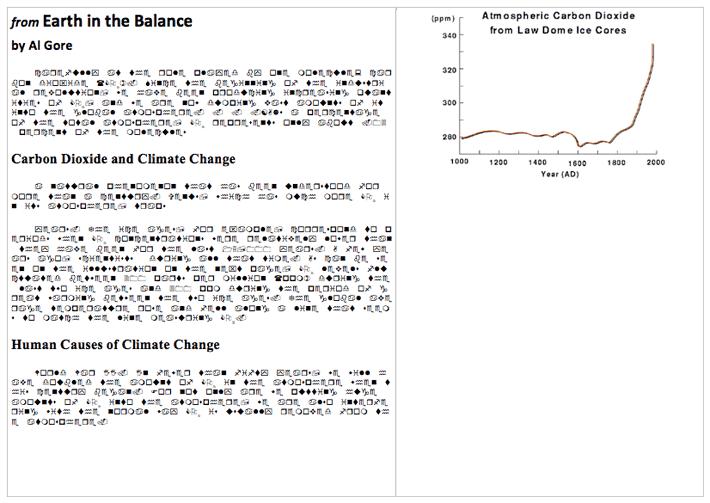Annotating on Tests
In some ways annotating on tests is easier than annotating your textbook or a library book. You often have all the freedom you want to mark up the test.
What may be difficult are the limitations in writing utensils. In many cases you will not have colors, highlighters, or sticky notes, but only a No. 2 pencil at your disposal.
You’ll have to modify your annotation system. Again, be consistent and plan your system before you get to the test. Here are some of the annotations you can use:
|
Within the text or on clear sticky notes, you can use these tools or techniques to make notes: |
In the margins or on sticky notes, you can write this infomation: |
|
|
Let’s look at a test that requires you to read a technical piece describing climate change. On the test, you may not be given information about the author or any background information. However, sometimes this information can be gathered from scanning the selection.
Look for the following:
- Title and author: What do you know about the subject suggested in the title? What do you know about the author?
- Headings: What do headings tell you about the subject? What do they tell you about how the piece is organized?
- Graphs or tables: What do graphs or tables tell you? Do they give you information about study results or lead to a conclusion?
- Introduction and conclusion: What do the introduction and conclusion tell you about the reading?
Let’s try scanning the following excerpt. First we’ll look only at the title, author name, headings, and graph. What can you infer from this information? (The main text is scrambled on purpose to help you focus on the other parts of the article.)

Using your notes write your answers to these questions. Check your understanding when you are finished.
- What does the title suggest?
- What do you know about Al Gore?
- What can you infer from the headings?
- What does the graph suggest?
- What do you think the article will say?
Sample Responses:
- It suggests that the world may be ready to tip. It suggests a possible problem.
- He was vice president under Bill Clinton. He won the Nobel Prize for Peace for his research on global warming.
- This article is about climate change and how humans have caused the problem.
- It suggests that carbon dioxide has increased a lot in the last few years.
- It will be about how humans have increased carbon dioxide levels and how this has led to climate change. Perhaps it will give some solutions.
Close
Now that you have a feel for the article, let’s take a look at the questions following the reading. These will give you even more information to help you read and annotate the article. Don’t answer the questions yet, but annotate them so you will know what to look for as you read the full article. Download the article with questions and excerpt and annotate it.
- Following Al Gore’s ideas, we can assume that he believes that Carbon dioxide (CO2) should be—
a) reduced.
b) eliminated.
c) exhaled by plants.
d) trapped in ice caps. - Before World War II, carbon dioxide in the atmosphere—
a) reached dangerous levels.
b) remained at a constant level.
c) was completely nonexistent.
d) fluctuated with the temperature. - The main idea of this reading is that—
a) carbon dioxide has always been in fluctuation and is a natural phenomenon.
b) the chemical and thermal dynamics of global warming are extremely complex.
c) by rapidly destroying the forests, humans are damaging the forests’ ability to remove excess carbon dioxide.
d) due to human causes, carbon dioxide has increased at a dangerous rate in the atmosphere since World War II.
Now that you have finished reading the full article, let’s look at the questions again. Answer them as you would for a test. Do you find the questions easier to answer?